TL;DR
If you love hardscaping, start as a side business, dial in base prep and scheduling, and only scale once your pipeline, pricing, and crew systems are proven. Use ReimagineHome.ai to visualize stone patios, walkways, privacy planting, and outdoor lighting design so clients buy the plan before you mobilize.
3–5 years is a realistic runway to build a resilient hardscaping business

Hardscaping is craftsmanship and management combined in creating practical outdoor living spaces.
Hardscaping design can turn a side yard into a destination and a backyard into an outdoor room—but running a hardscape company is not just setting pavers. It’s procurement, weather calls, compaction, crew management, and managing clients’ expectations week after week. Try your own exterior layout instantly on ReimagineHome.ai: https://www.reimaginehome.ai/?utm_source=blog
50–70% of low‑maintenance yard budgets go to hardscaping today

Up to 70% of yard budgets now prioritize durable, low-maintenance hardscaping elements.
At a Glance - 3–5 days is a common timeline for a 200–300 sq ft paver patio for a small crew; weekends-only work often clashes with client schedules and neighborhood noise rules. - $15k–$30k is a typical entry spend for used essentials (dump trailer, tracked skid steer, plate compactor, laser level, saw) if you avoid debt and buy smart. - 50–70% of a low-maintenance landscape budget often goes to the stone patio, walkway ideas, steps, and retaining walls—not plants—so estimating accuracy matters. - 80% of failures trace to base prep: digging, fabric on poor soils, proper aggregate, lifts, and compaction. - Sales and admin are half the job: bids, scheduling, subs, change orders, insurance, and warranty calls. - Seasonality is real; building a pipeline of deposits and maintenance add-ons (spring turn-ons, backflow tests where licensed, sealing) smooths cash flow. - Clients value clarity: visuals, firm scope, and clean jobsite etiquette beat price alone. Hardscaping ideas have never been more in demand, but the smartest path is methodical. Keep the day job while you: - practice core installs (stone patio, steps, small wall, edging, outdoor lighting), - build a simple, photogenic portfolio, - and stress-test your pricing with labor, fuel, disposal, and insurance fully loaded. Alt: “Twilight view of a stone patio with a 36-inch path and 2700 K lighting, visualized in ReimagineHome.ai.” Caption: “ReimagineHome.ai helps you test patio shapes, materials, slopes, and planting layers before mobilizing a crew.”
Anecdote
A designer in the Midwest took Fridays off for one summer, promising clients 3-day builds. He visualized each project—patio lines, step count, and planting massing—in ReimagineHome.ai, then executed with a compact crew. By fall, he had a six-week waitlist and kept the office role part-time through winter.
1–2% slope, 4–6 inches of base, 36–48 inch paths: the practical rules driving design now
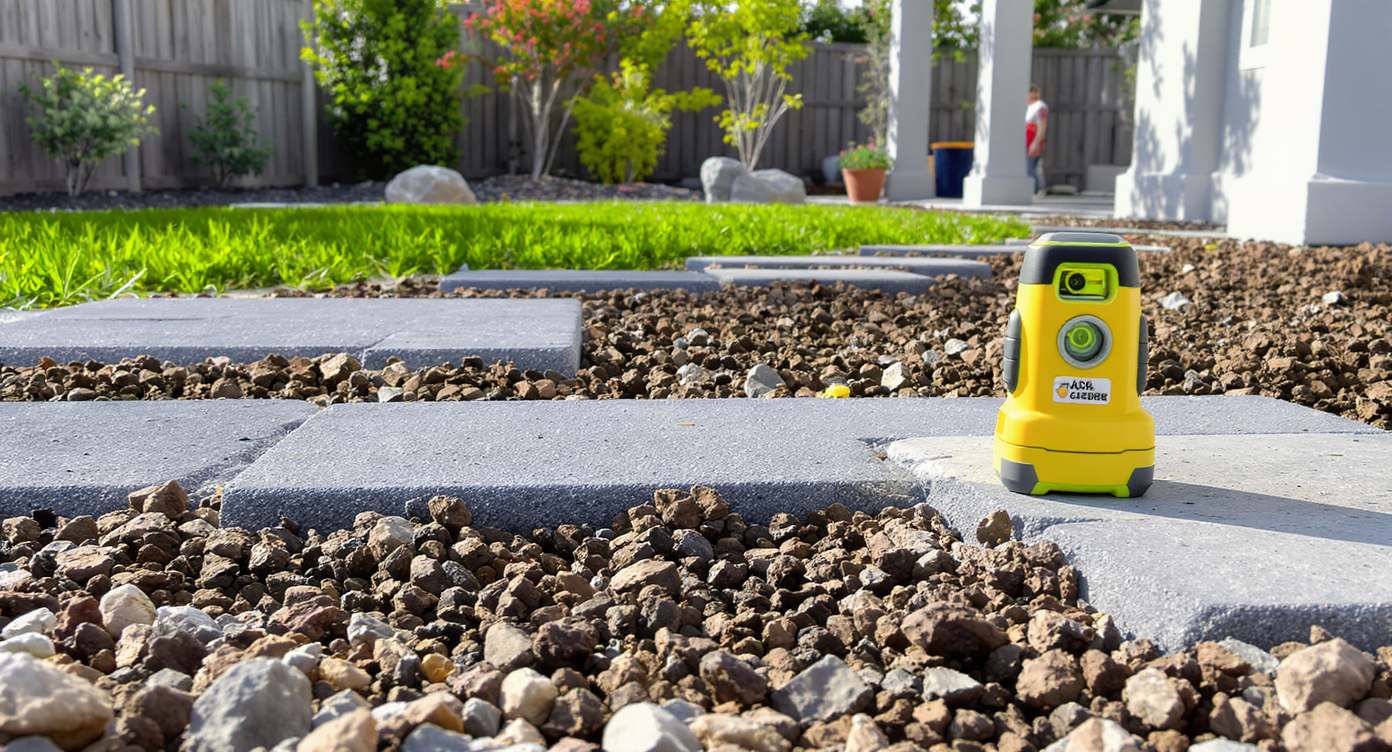
Precision in slopes and base layers ensures durability and proper drainage in modern hardscape design.
Why Landscaping & Hardscaping Are Changing Most homeowners now treat outdoor living like another room—kitchen-quality finishes outside, fire pits integrated with seating, and privacy planting that frames views. If you’re considering a backyard makeover business, learn to spec materials that age well and designs that drain. H3: 36–48 inches is the comfortable width for primary garden paths Front yard design and curb appeal hinge on circulation. Keep main walkways 36–48 inches (48 if two people walk side by side). Secondary paths can drop to 24–30 inches. H3: 2700–3000 K is the sweet spot for outdoor lighting color Warm white elevates stone texture and plant form. Layer path lights, wall washes, and uplights for trees; keep glare low and fixtures shielded. H3: 3–5 years is the maturity window for most privacy hedges Privacy planting takes patience. Combine fast growers with structural evergreens to avoid a barren first two seasons and to stabilize winter views. H3: 50–70% of low-maintenance yard budgets go to hardscaping Patios, steps, and retaining solve grades and traffic; plants soften and shade. Price the hardscape first; then right-size planting for four-season interest.
5 minutes is all you need to visualize patios, paths, and planting in ReimagineHome.ai
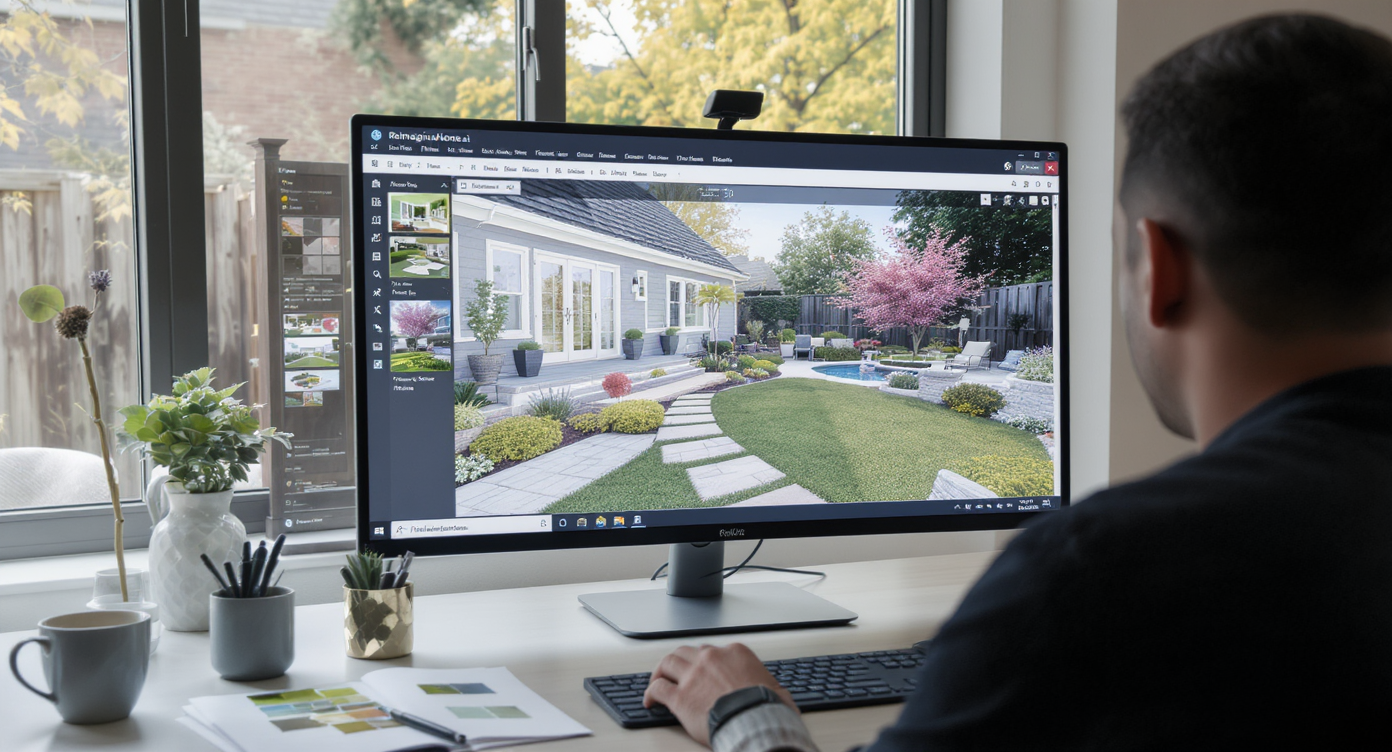
Visualize diverse patio and planting plans quickly with user-friendly design software like ReimagineHome.ai.
Key Trends You Can’t Ignore H3: 1–2% slope is the drainage rule for patios and walks Design patios and walkways to fall 1/8–1/4 inch per foot away from structures. Break large terraces into levels (terrace levels) if the yard is steep. H3: 4–6 inches of compacted base suits light-use patios on moderate soils On clays or driveway loads, spec 8–12 inches. Compact in 2-inch lifts with a plate compactor and use open-graded aggregate where freeze-thaw is brutal. H3: 1 inch maximum bedding layer prevents paver rutting Screed your bedding stone or sand at 3/4–1 inch; thicker layers pump and settle. H3: 2 materials max keeps small yards feeling modern For modern landscaping ideas for small front yards, limit the palette: one paver, one accent stone or gravel, one dominant plant texture, and one metal detail.
2 case studies show how small starts become serious hardscape businesses
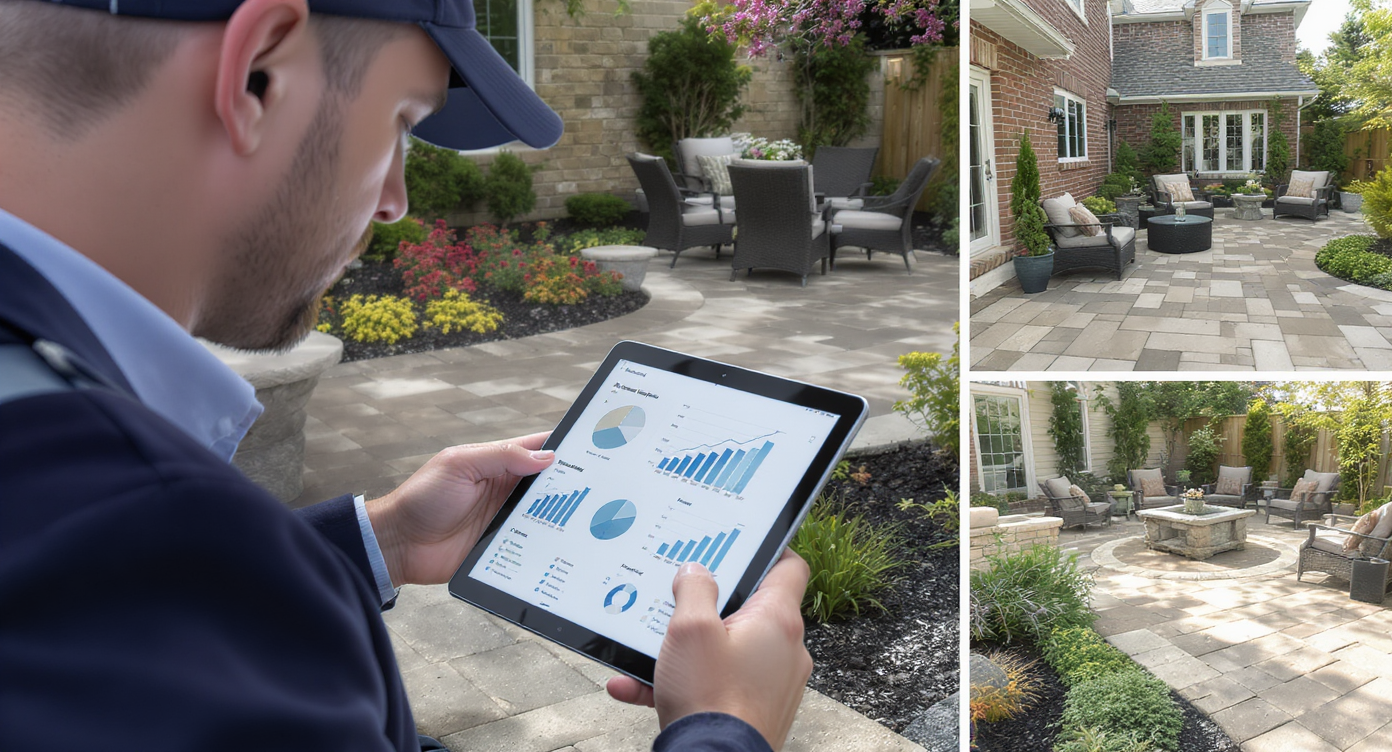
Small starts and smart planning can grow into thriving hardscape businesses with strategic design tools.
How to Use ReimagineHome.ai to Win Trust Before You Dig H3: 5 minutes is enough to generate multiple exterior concepts Load a photo of your home and explore hardscaping design options—stone patio shapes, walkway ideas, edging, and planting structure—then iterate by material and color. H3: 3 visuals per proposal can shorten sales cycles Clients choose faster when they see options. Use one “best value” scheme, one “premium” finish, and one “affordable landscaping ideas” version. Link them right into your estimate. H3: 2–3 blog guides can educate clients before site visits - Learn low-maintenance details here: https://www.reimaginehome.ai/blogs/low-maintenance-hardscaping?utm_source=blog - Explore front yard makeover ideas: https://www.reimaginehome.ai/blogs/front-yard-makeover-ideas?utm_source=blog - See outdoor lighting design basics: https://www.reimaginehome.ai/blogs/outdoor-lighting-design?utm_source=blog CTA: Visualize your yard now: https://www.reimaginehome.ai/?utm_source=blog
Visualization Scenario
Upload a photo of your existing backyard. Generate three stone patio concepts: one with a curved edge and gravel band, one rectilinear with a seat wall and fire pit, and one budget-friendly paver with turf insets. Swap materials, test 2700 K vs 3000 K lighting, and compare privacy planting layers along the fence. Export the winning scheme into your estimate.
10 quick answers to hardscaping questions people ask before they start
H3: 3–5 days — how long does a typical small paver patio take? A 200–300 sq ft patio with a two-person crew often takes 3–5 working days, assuming hauling access and no rain delays. H3: 4–8 inches — how much base do I need under pavers? Light-use patios on decent soils do fine at 4–6 inches; clay or vehicle loads need 8–12 inches, compacted in 2-inch lifts. H3: 36–48 inches — what’s the right walkway width? Primary routes: 36–48 inches. Secondary garden paths: 24–30 inches. H3: 2700–3000 K — what color temperature is best for landscape lights? Warm white is most flattering to stone and plantings and reduces glare. H3: $15k–$30k — what’s a lean starter equipment budget? A used tracked skid steer, dump trailer, compactor, saw, and lasers can fit in that range if you shop carefully and rent extras. H3: 80% — what causes most hardscape failures? Insufficient excavation, wrong aggregate, poor compaction, and weak edge restraint. Nail the base; the rest follows. H3: 1–2% — what slope should a patio have? Pitch away from structures at 1/8–1/4 inch per foot to shed water. H3: 3 visuals — will renderings really help me sell? Yes. Three options—value, premium, and budget—help clients decide quickly and reduce change orders. H3: 3–5 years — how long for privacy hedges to fill in? Plan interim screening with trellises or layered planting while hedges mature. H3: 2 steps — what’s the safest way to transition careers? Keep your job while you build a portfolio and repeatable process. Use ReimagineHome.ai to pre-sell designs, then scale when deposits cover your calendar.
1 simple next step to de‑risk your landscaping decisions
Real-World Stories H3: 1 small side yard became a 6-month pipeline A homeowner tested a 36-inch stone path and privacy planting in ReimagineHome.ai, then hired a part-time crew to build it. The clean photos booked three more walkway jobs within two weeks. H3: 50 patios in 15 years—built solo by design A designer-turned-installer kept scope tight: patios, seat walls, and irrigation service. He swapped sand for a finely crushed limestone bedding layer to improve rain resilience and offered licensed backflow testing each spring for recurring revenue. Common Mistakes H3: 80% of issues stem from poor base and edge restraint Dig to stable subgrade, separate clay with geotextile where needed, compact in lifts, and lock edges. Skipping one step costs thousands in callbacks. H3: 2 weekends per job frustrates homeowners and crews A 3–5 day patio sprawled over multiple weekends means noise conflicts, downtime, and weather resets. Either take PTO to finish continuously or schedule only what you can complete in sequence. H3: 1 missing line item can erase profit Price fuel, dump fees, saw blades, fabric, pallets, sealer, and warranty time. Add contingencies; small overruns sink margins fast. Pro Tips H3: 3 quotes per material keep your supply chain honest Lock paver and base pricing early, verify availability, and offer alternates clients can approve instantly. H3: 2–3 attachments multiply a skid steer’s earning power A land leveler, grapple, and power rake can turn clearing, grading, and driveway refreshes into profitable fillers between patio builds. H3: 1 page of site rules keeps neighbors on your side Quiet hours, plywood paths to protect lawns, daily sweep/blow-off, and end-of-day photos keep curb appeal high during the build. Visualize Your Home’s Next Chapter H3: 1 decision today reduces risk tomorrow Before you order a single pallet, show clients exactly how the backyard makeover will look. ReimagineHome.ai lets you present curb appeal options, pool and patio design studies, and front yard design concepts so you build once—right. Start here: https://www.reimaginehome.ai/?utm_source=blog
.svg)

.svg)

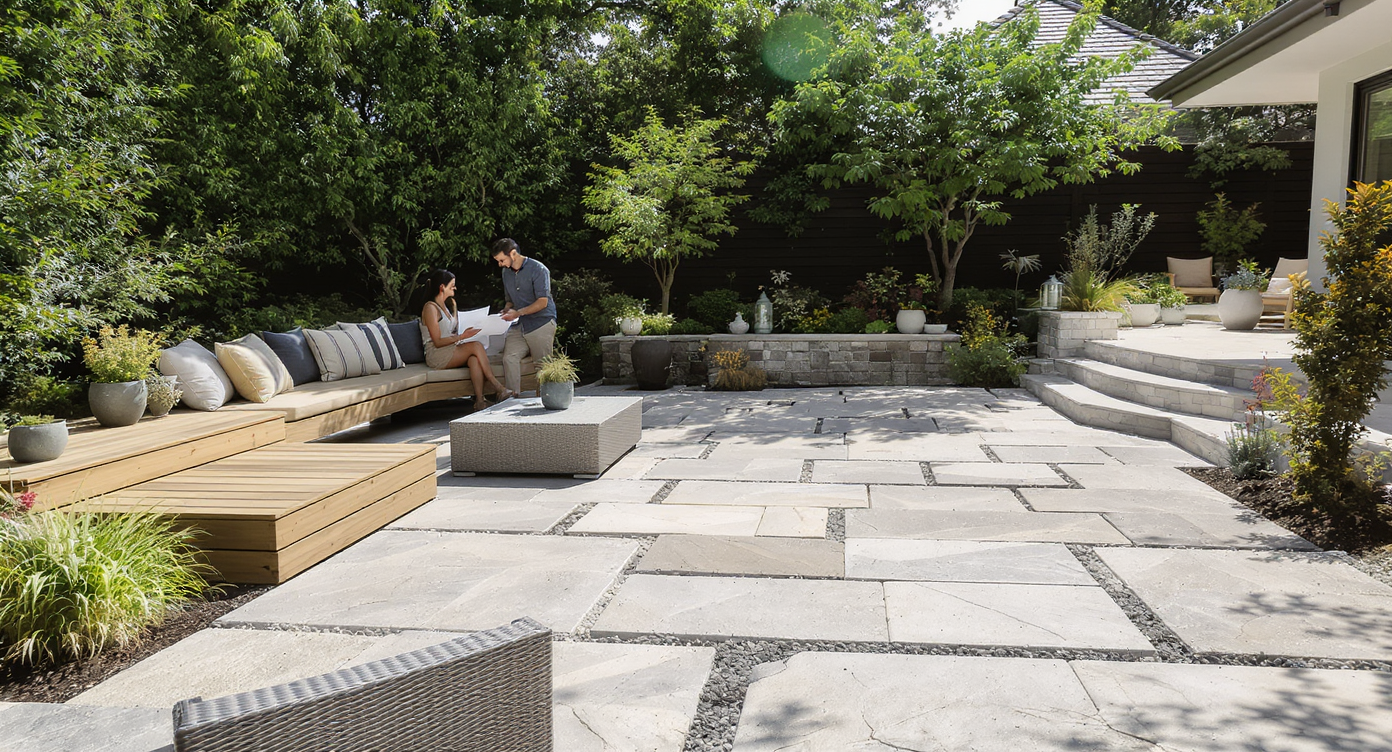




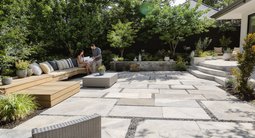


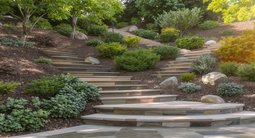
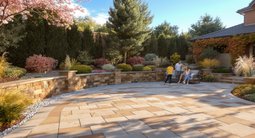


.png)